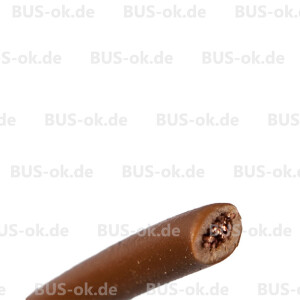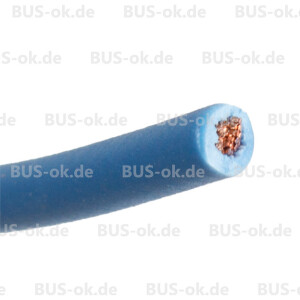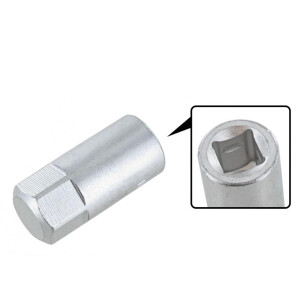T2-1968-1979
De keuze aan accessoires voor de T2 hebben we in deze rubriek...
- T2 BUS-ok Collection
- T2 Autoabdeckungen Deluxe
- T2 Buskissen
- T2 Dachgepäckträger
- T2 Fahrradhalter und Zubehör
- T2 Trittstufe
- T2 Kissen und mehr
- T2 Sonstiges & Schnick Schnack
- T2 Geschirr und Besteck
- T2 Schlafsitzbänke
- T2 Schlüsselanhänger und Spiele
- T2 Schmutzfänger
- T2 Thermomatten
- T2 VDO Öldruckanzeige
- T2 Sicherheitszubehör
Wiellagers, aandrijfassen, homokineten. Slechts een aantal...
Zonder brandstof rijdt zelfs de mooiste bus niet, en menig busje...
Exclusieve onderdelen voor de T2 van 1967 tot 1979 vind u in deze...
BusOK biedt aan: startmotoren, accudelen, verwarming, dynamo's,...
- T2 Frischluftgebläse
- T2 Batterieteile
- T2 Rückleuchten
- T2 Antennen
- T2 Innenbeleuchtung
- T2 Hupen
- T2 Lichtmaschinen
- T2 Lichtmaschinenregler
- T2 Instrumente
- T2 Kabel, Kabelschuhe und Zubehör
- T2 Blinker
- T2 Scheinwerfer
- T2 Zündung
- T2 Relais und Geber
- T2 Scheibenwischer & T2 Scheibenreinigungsanlage
- T2 Schalter
- T2 Zigarettenanzünder & Zubehör
- T2 Anlasser
- T2 VDO Zusatzinstrumente
- T2 Leuchtmittel und Leuchtmittelsätze
- T2 Sicherungskästen / Kabelbaum
Tal van accessoires voor aan de buitenzijde, maar ook essentiele...
Gereedschap, olie, vet, smeermiddelen en schoonmaakmiddelen. Al...
Hier is onze geschenkafdeling. Alles voor een goed gevoel, veel...
Vaak is het handig om toch even wat technische kennis in papier...
Scharnieren, dakstof, maar ook complete daken worden hier...
Alles voor de binnenkant van de T2. Onderverdeeld zijn o.a....
- T2 Armaturenbrett
- T2 Türgriffe und Schlösser
- T2 Türverkleidungen und Zubehör
- T2 Verkleidungen und Kick Panels
- T2 Verschiedenes
- T2 Werkzeug
- T2 Gurte
- T2 Handschuhfach
- T2 Himmel
- T2 Gepäckstangen und Jailbars
- T2 Ablagen
- T2 Heckklappenverkleidung
- T2 Schlafsitzbänke
- T2 Lenkräder
- T2 Teppiche und Gummimatten
- T2 Griffe für Westfalia
- T2 Sonnenblenden & Zubehör
- T2 Sitze und Polster
Niets zo vervelend als het vinden van de juiste maat schroef,...
Een kleine Type1 motor of een grotere Type4 motor, beiden werden...
Tal van middelen om uw T2 in goede staat te houden, goed...
Gaskabels, verwarmingskabels, pedaalrubbers, km-tellerkabels en...
Een historische bus bestaat grotendeels uit staal. Frontpaneel,...
- T2 Ecken und Batterieboden
- T2 Heckblech
- T2 Hohlraumversiegelung und Waxoyl
- T2 Bodenbleche
- T2 Stoßstange
- T2 Chassis
- T2 Dach und Regenrinne
- T2 Türgriffe & T2 Schlösser
- T2 Front
- T2 Werkzeug
- T2 Kniestück
- T2 Motorklappe
- T2 NOS - Karosserieteile, Einzelstücke, Abschnitte
- T2 Pritsche und T2 Doka
- T2 Reparaturbleche
- T2 Schiebedach
- T2 Schiebetür & Zubehör
- T2 Radlauf
- T2 Seitenteile
- T2 Heckklappe
- T2 Türen
Bij de Transporter van de 2e generatie zijn er verschillen in...
Alles om de T2 vakkundig af te dichten en tegen roest te...
- T2 Heckklappendichtung
- T2 Stoßstangengummis
- T2 Türdichtungen
- T2 Lamellenfenster
- T2 Motorklappendichtung
- T2 Fensterdichtungen
- T2 Fensterdichtung mit Nut für Zierleiste
- T2 Fensterdichtung mit Nut für Alu-Zierleiste
- T2 Scheinwerfer und Blinkerdichtungen
- T2 Dichtungen für Pritsche und Doka
- T2 Komplettsets Dichtungen
- T2 Schiebetür
- T2 Schiebefenster
- T2 Waschwasserdüsen und Schläuche
Voorruiten, zijruiten, achterruiten, klapramen, safari-raam. Maar...
Geen zin om de hele shop door te zoeken en alles aan te moeten...
Op een klassieke T2 horen natuurlijk ook stickers: technische...
Auspufftöpfe, Abgasanlagen, Wärmetauscher,...
Aandrijving, koppeling en versnellingsbakdelen voor de T2 zijn in...
Schokbreker, velgen, wieldoppen, vooras, naven, spoorstangen,...
Eem compacte rijdende caravan, zo zou je de T2 kampeerwagen...
Volkswagen Transporter der zweiten Generation T2 August 1967 in Hannover. Die Werksferien von Volkswagen gehen zu Ende, der Nachfolger des knuffig wirkenden T1 mit der geteilten Frontscheibe wird produziert: Der neue Bus, stärker, größer, moderner und sicherer. Der T2 fällt sofort durch seine Panorama-Frontscheibe ins Auge, auch die Seitenscheiben wurden größer. Der Aufbau wurde bei gleichem Radstand 20cm breiter und länger. Das Antriebsaggregat hatte 3 PS mehr, der Hubraum betrug 1600ccm. Im ersten Produktionsjahr verließen 141.569 Busse das Werk. Bereits Mitte 1970 wurden weitere Verbesserungen eingeführt, Scheibenbremsen vorn, Sicherheitsgurte und eine geteilte Sicherheitslenksäule wurde verbaut. Die Rückleuchten sowie die Belüftungsöffnungen am Heck wurden verändert. Der von August 1971 bis Juli 1972 gebaute T2 hatte teilweise Elemente des bisher gebauten T2a als auch des neueren T2b, der ab August 1972 bis zum Ende des Produktionszeitraumes gebaut wurde. Auffälligste optische Neuerungen sind die oben neben dem Lüftungsgitter eingebauten rechteckigen Blinker und die dickeren Stoßstangen, die nun nicht mehr mit Trittstufen versehen sind. Der T2 wurde in verschiedenen Varianten gebaut, als Kastenwagen, Kombi (ab 1973 auch mit Hochdach), Pritsche, Großraumpritsche, Doppelkabine 6-Sitzer, Kleinbus und Kleinbus L. Am 31. Oktober 1979 endet die Produktion des T2 in Hannover. Der T2 wird in Brasilien mit luftgekühltem Heckmotor und G-Kat weitergebaut: unter Verwendung von T2b-Bauteilen (Blinker und Rückleuchten) sowie den Stoßstangen vom T2a. Die Produktion wird aber Ende 2013 endgültig eingestellt.










